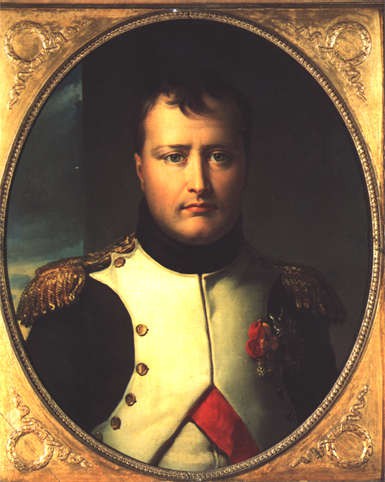Commissioned by Lord Apsley and builtfrom 1771 to 1778 by Robert Adam, Apsley House owes its famous address (N°1, London) to its location. It was in fact the first house of the British capital after the tollhouse when entering London from the west.
Purchased in 1807 by Marquis Wellesley, it was sold to his brother, the Duke of Wellington, in 1817. After a glorious military career spent in India, Spain, Portugal and which ended brilliantly with his victory at Waterloo, Wellington moved into the residence which had been transformed by the architect Benjamin Dean Wyatt, who added the Dining Room in 1819 and the magnificent 90-foot long Waterloo Gallery in 1828-30.
The house was then covered in stone from Bath and the entrance was moved. A Corinthian portico was added to the façade. The annual banquet commemorating the Waterloo victory was held every year from 1820 to 1829 in the dining room. After 1829, the eighty guests would meet in the Waterloo Gallery until Wellington’s death in 1852.
The house and its collections were donated by the seventh Duke of Wellington to the State under the terms of the Wellington Museum Act of 1947. Management of the building became the responsibility of the government and the management of the museum became the responsibility of the Victoria and Albert Museum.
The Duke of Wellington’s collection of art works is of exceptional wealth and quality. Because of his military rank and prestige, he received many official gifts, in particular a number of paintings from the Royal Spanish collection including four works by Velazquez. It is also composed of many paintings from the Italian school, of Dutch and Flemish paintings from the 17th century and of an equestrian work by Goya.
This collection contains a great many works of art linked with Napoleon, such as the famous almost-nude statue by the celebrated sculptor Canova, representing the Emperor as Mars. The sculpture, which was completed in 1806, was commissioned by Napoleon in 1801 and arrived in Paris on 6 February, 1811. Inspired by the heroic nudes of antiquity, it caused considerable embarrassment to the Emperor who could not see any likeness between himself and the marble athlete. Put away in a corner of the Louvre, King Louis-Philippe sold it to the British government for 60,000 francs. It was then given to Wellington.
A few paintings depict the Emperor and his family: Emperor Napoleon, Empress Josephine, Joseph, King of Spain and Pauline, Borghese princess by Robert Lefèvre, Napoleon Bonaparte and Joseph, King of Spain by Gérard, Napoleon Bonaparte, First Consul by Dabos. Among the china is a beautiful Sèvres china set decorated in an Egyptian style which dates back to 1810-1812. It was commissioned by Napoleon for Josephine and given to Wellington in 1818 by Louis XVIII. There are also embroidered flags of the French departments which were paraded in front of Napoleon at the Champ de Mai ceremony on the Champ de Mars in June 1815. They were subsequently given to Wellington by Louis XVIII.
Karine Huguenaud


